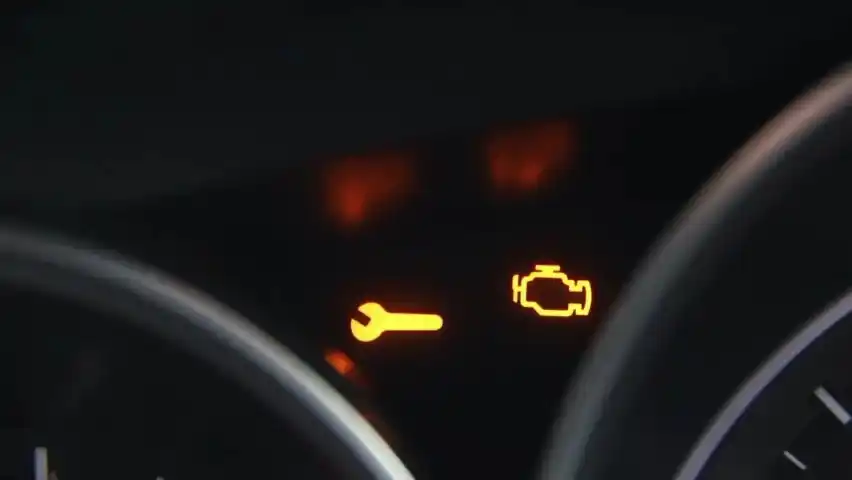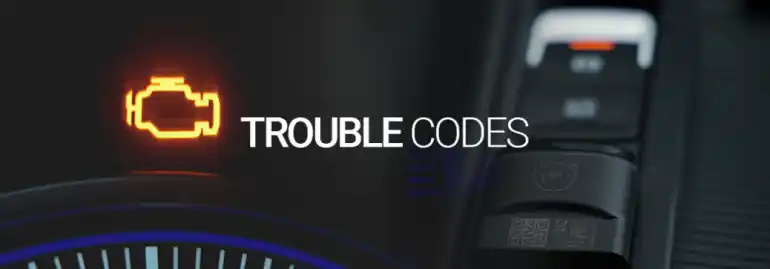
What is DTC Off?
DTC Off means switching off specific car error codes in the software of your car’s ECU. It is something commonly done during professional car tuning. Our DTC Off is for when performance upgrades or modifications generate anticipated error codes which often cause the check engine light to shine even if your car operates properly. It tells the ECU to ignore these particular fault codes so the predictable faults don’t trigger warnings that might appear due to the tune.
What Does DTC Off Mean for Your Car's ECU?
Imagine how your car has its own way of talking to you when something is not right. Diagnostic Trouble Codes (DTC’s) or car’s brain language. You might also hear them called engine fault codes. When the internal watchdog of your car, the On-Board Diagnostics (OBD) system, detects an issue that could harm the engine, transmission or emissions system, it generates a Diagnostic Trouble Code (DTC). This code gets kept in your car’s brain, the Engine Control Unit (ECU). You might notice the check engine light (officially called the Malfunction Indicator Lamp (MIL)) come on in your dash around this time.
The computer has a predetermined dictionary of diagnostic trouble codes (DTCs) that identifies where the issue is and what it is. As a result, diagnosing and fixing issues become much easier for dealer technicians and owners. It usually goes like this: something breaks, the OBD system detects it, a DTC gets created, and your check engine light goes on. You need to understand how this works before you can expect DTC Off to be useful. This just tells the ECU not to report specific DTCs.
What are the error codes before considering switching off the DTC?
When trying to understand what a DTC is telling you, it’s good to know how they are structured. In particular, it helps to know about common OBD-II codes. These are usually five-character codes:
The first letter tells you what serious system is affected.
· P powertrain relates to engine transmission etc.
· C is for chassis (steering suspension brakes).
· The car’s body is generally used for cabin parts like airbags and seats.
· The letter “U” is for the network. It encompasses wiring issues, computer communication, and other similar concerns.
The second character (digit) indicates whether the code is standard or manufacturer-specific.
· ‘0’ means it’s a common code established by Society for Automotive Engineers (SAE). Most car has generic codes.
· '1' (and sometimes '2' or '3') usually means a manufacturer-specific code with more detailed information about the specific brand/model.
Third Character: Specifies the actual sub-system of the main system. For instance, in Powertrain codes ('P'), a '1' could refer to fuel/air measuring, a '3' to the ignition control system or a ‘4’ to the emission control system.
The fourth and fifth character together form a two-digit number which identifies the fault in the subsystem with a range of 00 to 99.
Knowing this structure helps demystify the codes Knowing certain digits point at emissions is relevant with the DTC Off as the types of modifications people make affect what’s checked. Most passenger cars use OBD-II while heavy-duty vehicles conform to a standard called J1939. Savvy diagnostics and fault codes are essentially similar.
Why Does DTC Off Exist in Chiptuning?
In terms of chiptuning (vehicle tuning), DTC Off is a software service meant to disable DTC. It basically consists of changing the code inside your car’s ECU so that it won’t report certain DTCs of your choosing. In simple terms, the ECU is told to simply ignore the particular fault conditions, which would usually trigger the codes.
When specific codes are turned off, the ECU won’t log those faults and crucially, the check engine light won’t turn on because of those specific disabled faults. It's a specific tweak within the ECU software that you usually ask for together with performance tuning or after a physical modification has been done.
When is DTC Off Typically Used by Tuners?
Car enthusiasts will often request DTC Off for a number of reasons:
After you remove any physical parts: Because they just want to change something in the car, usually people will remove the intake flap, EGR valve or DPF/catalytic converter or something similar to try and get better airflow (less restriction), or change the behaviour of a component. The check engine light comes on when the electronic control unit (ECU) detects a fault code because of the modification or removal of a physical component like the intake flap. DTC Off prevents the warning light for a modification by turning off the specific codes related to the parts being removed or changed.
Sometimes tuning the ECU has a code effect. This refers to the remap or chiptune of it. Errors may pop up because of minor software clashes, parameter values being just outside what the new map expects or simply because of them communicating differently. In these situations, we can use DTC Off to make the tuning-related DTCs, that interfere with the working of the tuning device, disappear. This has no negative effect on the functionality of the vehicle.
DTC Off is often used with things like EGRs or DPFs because it can manage the electrics that popular performance and emissions system alterations cause.
Is DTC Off the Same as Just Clearing a Fault Code?
DTC Off is quite different from merely clearing DTCs using an ordinary OBD-II scan tool.
Clearing Codes: This is just a temporary fix. When DTCs are removed using a scan tool, they are removed from the ECU’s memory. But, when the underlying fault that caused the code in the first place is still present, the OBD system will detect it again, and the DTC (and check engine light) will almost certainly reappear, often quite quickly. Clearing is like hitting the snooze button – the alarm does shut off temporarily, but the issue at hand has merely been set aside.
Changing what the software of the ECU does. It’s a kind of permanent instruction that tells ECU to ignore certain fault condition. The setup is basically told not to create or report those DTCs anymore. You can apply a 'disable of fault’, as the name suggests, which will disable DTC from being raised. Simply put, this is the use the analogue of a permanent DTC which the ECU will ignore. In other words, it simply will not generate or report that DTC.
This distinction is key Clearing codes just resets them temporarily. DTC Off takes it a step further and makes a perma-changed software change in the ECU to ensure that those particular codes never get thrown again. This is usually done when the condition that throws that code is a known and accepted result of a modification.
What are the Upsides of Using DTC Off After Modifications?
If you’re chiptuning and modifying cars, DTC Off has certain benefits if used wisely.
The check engine light comes on frequently after fitting aftermarket parts like exhaust (like catless and high flow downpipes) or emissions-related ones (like EGR or swirl flap removal). DTC off helps to avoid this hassle. Even when modding is on purpose and the car behaves as the owner wants, this warning light the check engine light can distract the car's driver and make one worried. You can now expect a clean dashboard while driving because DTC Off can suppress these codes.
Not the BEST DTC Suppression; Limp Home Mode Prevention: Some or all DTCs the ECU considers relevant (mostly regarding emissions or core engine functions) will trigger a limp home mode. The limp home mode limits engine power and vehicle speed by design. If there’s a known code that causes limp mode if the DPF is removed, using DTC Off to suppress this code stops the vehicle from limiting performance unnecessarily, enabling the owner to make full use of the tune or mod.
Unlocking Performance Enhancements: Some performance improvements require the removal of a parts that the ECU program watches. If you can’t turn off the DTCs, you’ll have a million warning lights on the dash and probably suffer limp mode. DTC Off makes these modifications possible by dealing with these error codes so that you can actually make changes to improve performance without getting annoying alerts.
Sometimes, the tuning software that is used can cause some kind of bugs that create a lot of erroneous DTCs. DTC Off can be employed as a means of fine-tuning in these situations to disable these erroneous codes selectively, so that the final tuned car is free of false alerts.
Will Using DTC Off Shorten My Engine's Life?
DTC Off won't hurt your engine or shorten its life since it's just a software tweak. How a service is used in connection with the DTC Off program directly affects engine longevity.
If you use the DTC Off feature to clean codes of your engine, then it can significantly contribute to the reduction of your engine lifespan. This will happen if you do not use this feature in the right way. Hush those warnings, but forget to fix the problem—you’re just handing over cash for skin-deep fixes instead of real-deal repairs.
If you use it properly: DTC off means “disable trouble codes.” It will stop your engine from throwing a code if anything goes wrong. If you use DTC off properly as part of a pro tune, you’re good. For example, to disable a DTC related only to components that have been intentionally removed… If it’s a DPF or EGR on a race car, that’s fine. In addition, the ECU has been carefully recalibrated to run safely, with DTC off, and efficiently - then it’s won’t negatively change engine lifespan. When this happens, we’re just managing the electronic side effects of known, intended changes on an otherwise healthy and well-tuned engine.
The main thing is about whether the DTC’s underlying reason is dealt with. If a real problem is ignored with DTC Off, expect engine issues down the road. If used to deal with expected codes caused by modifications to a well-maintained and carefully tuned engine, it should not shorten the life.

